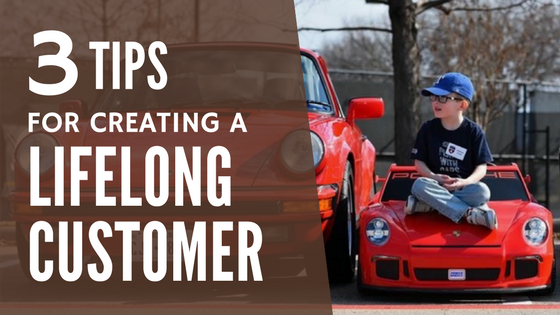How Far Can Your Brand Stretch?
/Have you ever noticed that brands lately have morphed into areas that you just may have not expected?
I just received an email blast from Wegmans that they are now selling yoga wear. As a person who sees Wegmans as a food store and a foodie one at that, it caught my attention and not in a good way. It felt strange to me, jarring. I’d expect such a product launch from a retailer like Walmart, but not a food store whose main brand premise to date has been about the eating experience.
Over the past few decades, we’ve seen other big brands stretch, expand into new categories and extend their reach. For example, Dove successfully expanded from being known for a moisturizing soap to being a wide-ranging beauty brand that connects with “real” women in every area of their beauty routine. Gerber did the same thing, growing from primarily a baby food brand to being an “all about baby” company.
Food stores sell general merchandise including light bulbs, sponges, paper plates and toilet paper – everything you need for your home to run, but people typically don't enter their favorite food store in search of clothing. An argument could be made that selling organic, fair trade “purposeful” clothing is in line with Wegmans’ brand position, but how far can a brand stretch before it snaps?
We talk about brand stretch often with our clients at the beginning of an engagement. Creating a long-term plan and vision for a brand at the onset is very powerful. It also creates a messaging platform, a brand architecture and visual guide that can stay consistent and grow, continually bringing in new customers while keeping and connecting with current ones.
What can you do to ensure that your brand stays on message as it grows?
Plan and Envision
Many companies never take the time to be together and just brainstorm about the future. There is no immediate ROI on brainstorming and the time it takes, so a team’s energy is primarily spent on revenue generating activities. However, I would challenge that taking the time to create a shared brand vision has more ROI than you think.
As a kid, people are constantly asking you “What do you want to be when you grow up?” While some kids just instinctually know and never waiver, others struggle to define their path. Your company may be like that directionless child – you have some sense of what you’re good at, but can’t clearly state your ultimate goal.
Take time with your leadership team to reflect inward, look outside immediate expectations and assumptions, and create a best-case-scenario vision for your brand. This can provide a clear purpose for your company and help motivate the entire team to focus their efforts as you work toward the company’s ultimate goal.
Know Who You Are
When we learn what our weaknesses are, our natural inclination is to work to improve them. In practice, however, it can be much more successful – for an individual as well as a company – to forget your weaknesses and instead work to maximize your strengths.
Being honest about who you are (and, just as importantly, what you’re not) will help you build a solid, authentic foundation and will make brand choices much easier moving forward. Once you’ve defined who you are as a company, the path for growth and expansion should be easier to see.
Stop Moving the Target
Have you ever seen the movie Airplane? I’m reminded of a scene where the tower supervisor hands an air traffic controller a piece of paper:
“Johnny, what can you make outta this?”
“This? Why I could make a hat, or a brooch, a pterodactyl!”
It’s a very funny scene, but it begs the question – what is it?
Your brand could be anything, but what is it?
Some brands encounter an identity crisis as they grow. If they expand to appeal to a new target audience, they feel the need to pivot their branding to fit what that target wants or expects them to be. This puts a brand in danger of losing the core of their brand and it can be very confusing for customers.
Trust that the core values of your brand will have a mass appeal. Apple’s famous “Think Different” campaign, for example, appealed to outsiders and yet they became a household brand. Whether your brand represents tradition, change, integrity, heritage, rebelliousness, youth, or experience, those qualities can be expressed in many ways that will allow you to remain genuine to your brand even as you evolve to keep up with your company’s growth.
Ultimately, stay true to yourself. Grow and stretch your limits, but be aware of what it will mean for your brand, your customers, and the health of your business.






